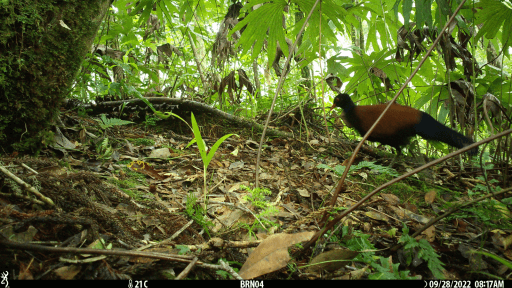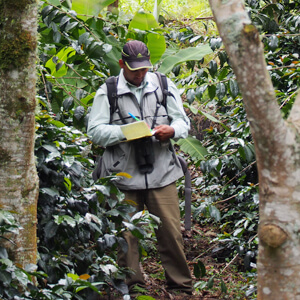Around the world, more than 130 species of birds, or about one percent, are considered “lost.” At least a decade has passed since each of these species were last confirmed by photographs, sound recordings, or physical documentation.
To identify, promote, and rediscover these species, American Bird Conservancy (ABC) has partnered with Re:wild and BirdLife International to form a global initiative. Launched in 2021, the Search for Lost Birds supports field expeditions with local partners to seek lost birds and, when rediscovered, to protect these birds and their habitats. This expanded, global effort builds upon the groundwork that ABC laid back in 2016.
For decades now, ABC and its partners have worked together to conserve birds that were formerly lost, such as the Blue-eyed Ground Dove (rediscovered in 2015), Long-whiskered Owlet (2002), Kaempfer's Woodpecker (2006), Indigo-winged Parrot (2002), Stresemann's Bristlefront (1995), Antioquia Brushfinch (2018), Pale-headed Brushfinch (1998), and Cherry-throated Tanager (1998).

If you don't know where something is, or even whether it exists, it's very difficult to directly safeguard it. The same holds true for lost birds. Our expeditions work with local partners to provide conservationists with the key to unlocking protection efforts for these species. For all the species listed above, rediscovery was the critical first step toward permanent protection measures.
Further, by identifying lost birds in a timely fashion, our approach provides an early-warning system for these species. Finding lost birds can mean the difference between saving them and losing them forever. Tragically, for some lost birds, like the Cryptic Treehunter, Alagoas Foliage-Gleaner, and Po‘o-uli, it was already too late. All three species are considered to have gone extinct this century.
The following case studies illustrate how a series of steps can ultimately lead from rediscovery to recovery:

Black-browed Babbler – Prior to its stunning rediscovery in southern Borneo (2020), only a single specimen was known, collected at some unspecified point during the 1840s (more than 170 years prior). Aided in part by a follow-up grant from the Search for Lost Birds (2021), a team of Indonesian researchers described its preferred habitat, mapped out its expected distribution, and assessed its conservation status. Catch a glimpse of this rare bird here.
Antioquia Brushfinch — In 2018, a group of Colombian researchers rediscovered this elusive Andean species 47 years after the only dated specimen. With ABC's support, local researchers, Corporación SalvaMontes, Corporación Neotropical Innovation, Fundación Guanacas, and others found new locales, protected roughly 1500 acres (including an 880-acre reserve dedicated to the brushfinch!), and explored silvopastoral techniques that benefit both birds and farmers. It is estimated that there are currently about 100 individuals of this Critically Endangered bird. For more details, click here.
Indigo-winged Parrot — High in the Colombian Andes, this colorful parrot had remained cloaked in the clouds for nearly a century (91 years), until an expedition led by Fundación ProAves and funded by ABC confirmed its existence in 2002. Since then, a joint effort by ProAves, ABC, and partners has spearheaded its recovery, including a 356-acre expansion of a key reserve, just two years after the reserve had been established. With concerted conservation efforts like these, this rare parrot has increased over the last two decades to an estimated ~400 individuals today.

Since 2021, the Search for Lost Birds has supported ten projects to search for lost birds or assist with follow-up conservation efforts for recently rediscovered species (like the Black-browed Babbler above). Here's a quick tour of some highlights:
Black-naped Pheasant-Pigeon — After 126 years since the last record, this striking terrestrial pigeon was rediscovered in a remote region of Papua New Guinea in 2022. With their superior knowledge of the forest, local hunters provided the crucial breakthrough, recognizing this bird and ultimately guiding the team straight to their quarry.
Santa Marta Sabrewing — On the heels of a thrilling rediscovery in 2022, the Search for Lost Birds provided SELVA with a follow-up grant to continue unraveling the details of this Critically Endangered bird. With ABC's help, their work is still ongoing in the Santa Marta Mountains of Colombia.
Dusky Tetraka — This bird was a long-standing mystery in Madagascar. A critical piece of the puzzle fell into place in 2022 and 2023, when this warbler-like bird was found, photographed, and audio-recorded at two separate locations. With this pivotal information in hand, researchers hope future surveys will uncover this bird at even more locations.

ABC and the Search for Lost Birds seek to inspire a global community of birdwatchers, researchers, and conservationists to help resolve the uncertainty surrounding lost birds. But we can't do this on our own.